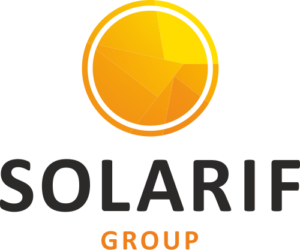CAR / Construction All Risk
Why?
As an installer, EPC or investor you run a lot of risk during the construction period of a solar power installation. Your PV project can be at risk due to an implementation error, theft/vandalism, short circuit, fire, storm, water damage, subsidence, cracking or your own fault (e.g. dropping the solar modules). The goal of a CAR insurance policy is to ensure all parties are covered on a project, regardless of the type of damage to the property or who caused the damage.
Who is it for?
Often several parties are involved in the realisation of a project. This can lead to complex risks. The CAR is most often purchased by the installer or EPC. Yet it can be wise as an investor or future owner to purchase the CAR insurance yourself. By purchasing a Construction All Risk insurance policy as an investor or future owner, you prevent the possibility of your project(s) not being insured by the installer or EPC. You know your project is insured, you know exactly which protection is in place, and the most important, you are in control. In case of an insured event, the amount of the damage is paid to you and not to the installer or EPC. You receive the money, so you have the financial leverage to enforce a solution by the installer or EPC to solve the damage.
Types of insurance
The construction all-risk insurance is a voluntary insurance that comes in the form of an all-risk contract and insures construction, renovation,
reconstruction, assembly, disassembly or installation work from the beginning of the construction work to delivery of the finished project to the contracting entity. An insured event is damage caused by an unexpected and unforeseen event specified in the policy conditions, as a result of which the construction work or materials are damaged or destroyed and the insurer becomes obliged to indemnify them. An all-risk insurance contract covers any damage whose causes are not presented in the policy conditions as restrictions.
This CAR knows two types of policies: a continuous policy and a fixed-term policy.
The continuous policy is based on the turnover of all the work done. All projects are covered by the policy, including the smaller ones. Because not every project needs to be reported directly to the insurer, you never run the risk that a project is not insured (within the agreed limits).
The fixed-term policy is primarily intended for one-off projects or special projects. The premium is based on the value of the work.
What is covered?
Section 1 “The contract work” must be insured at least. The other sections are optional.
The Construction All Risk Insurance covers:
Section I: the contract work.
The work agreed on in the construction contract.
The sum insured for construction work is the recovery value to a condition that prevailed immediately prior to the damage.
Risks often covered under a CAR policy include flood, wind, earthquakes, water damage, and mold, construction faults and negligence. The CAR typically does not cover normal wear and tear, willful negligence or poor workmanship.
Advanced Business Interruption (optional)
If purchased the advanced business interruption covers the financial loss of the insured employer resulting from the interruption with the contract work which causes delay in the scheduled start of the commercial operation during the indemnity period in consequence of damage insured by “The contract work”.
Section II: Liability
The liability section covers the employer, and other parties (e.g. the sub contractors) against their legal liability to third-parties for events related to the performance of the work such as:
- Injury to persons;
- Loss, damage, or destruction to material property.
In addition, this section also covers the liability of insured persons towards each other. Suppose, for example, that the contractor causes damage to his client (both are insured under the policy), then the contractor can invoke the policy, because his liability towards the client is covered.
Excluded from coverage are among other:
- damages incurred by the employees due to working conditions;
- damage caused to property that the insured or someone for him has in his possession, in use or in hire, for processing, treatment or for other reasons have among them (supervision clause).
The sum insured is a maximum amount per event or series of events, arising from one and the same cause.
Section III: Existing property of the client
Section III covers damage to existing property of the client as a result of the insured work. The damage must therefore arise directly from the work performed.
Section IV: Auxiliary materials
This section covers damage to equipment of the contractor caused by external calamities, such as storms, arson and theft. Auxiliary materials are understood to mean scaffolding, formwork, shacks, sheds, tools, etc., which are present on the construction site for the purpose of the work.
Excluded are sailing and floating equipment, draglines, bulldozers, cranes and other mechanically propelled means of transport. There’s an extensive, more specific policy for this type of equipment.
Section V: Property of construction management and staff
This section covers damage to personal property of the construction management and the personnel of the insured, working on the construction site, caused by external calamities, such as storms and theft.
Excluded from coverage are:
• money and money-worthy papers, etc.;
• mechanically propelled vehicles.
Section VI: Transport
This section covers damage or theft of building components during transport.
Important for the cover under this section is that:
• the transport must be at the expense and risk of the policyholder;
• there is cover from loading till unloading on the construction site.
Maintenance Period
In addition to the construction period, extra cover can be included during the maintenance period.
Depending on the insurer you can choose between 3 types of coverage:
- Visit maintenance: visit maintenance covers the material damage caused by carrying out maintenance obligations during the maintenance period.
- Extended Maintenance: the extended maintenance covers the damage that have been caused on the construction site during the construction period, but which is first noticed during the maintenance period.
- Guarantee maintenance: the guarantee maintenance covers the damage that not only occurred during the construction period but also for damage originating before the actual construction starts and which is first noticed during the maintenance period. The cause of the damage therefore predates delivery, and therefore also applies to the design.
More information/quotation
The cover is tailor-made. You can choose for an even more extensive cover or exclude categories that do not apply to you. We can offer you a quote as soon as we have received all the required risk information. For more information and advice about a CAR insurance policy you can contact one of our account managers.

